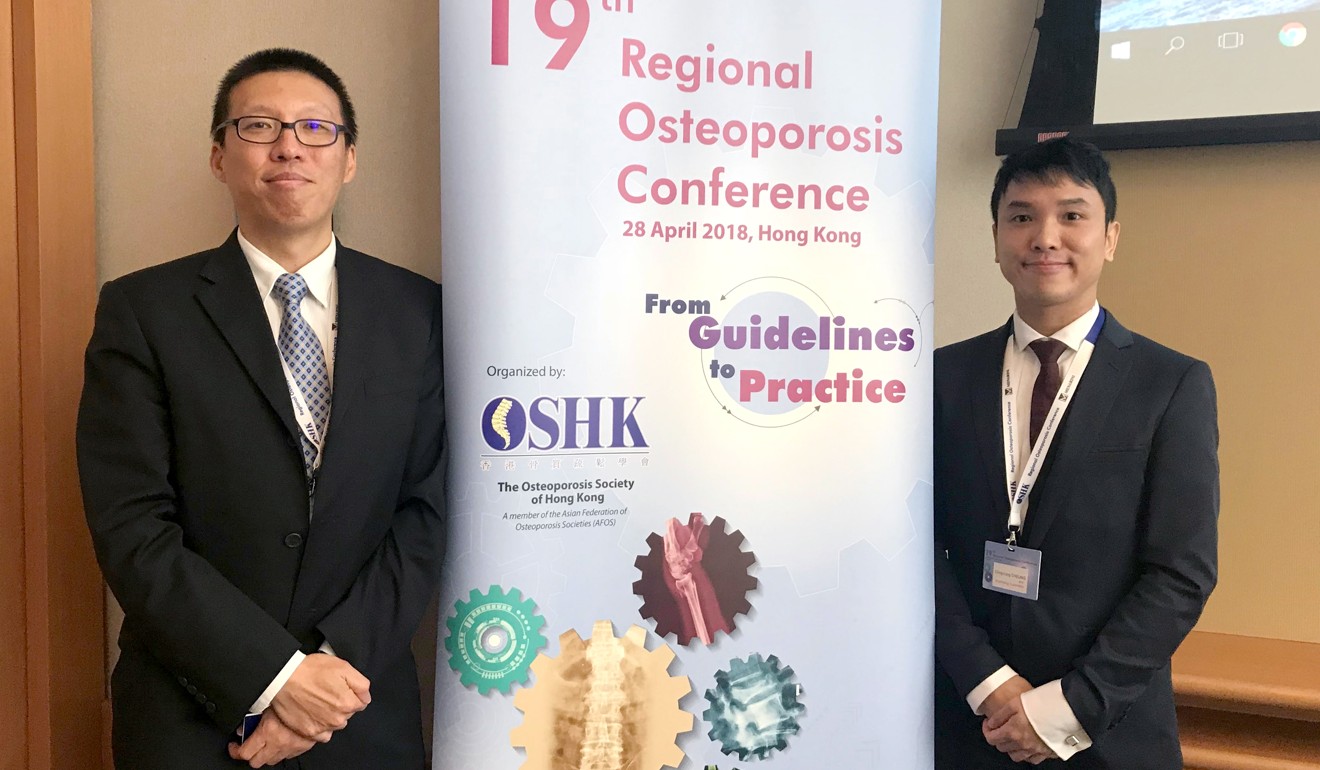
Number of hip fractures from osteoporosis in Hong Kong expected to triple in 30 years
The surge surpasses population growth rates over the same period, and experts advise those at risk to go for screening and receive early treatment if necessary
The number of Hongkongers suffering from hip fractures caused by osteoporosis would almost triple in about 30 years at an annual rate estimated to be one of the fastest in the region, behind only Malaysia and Singapore, according to researchers.
The projection was made in a study conducted by the Osteoporosis Society of Hong Kong and other researchers in Asia. They suggested that the number of new cases in Hong Kong would increase from 9,590 this year to 27,468 in 2050.
This rate far surpasses the population growth over the same period. According to official statistics, the city’s current population is 7.5 million, with a projected figure of 8.2 million by 2050.

Referring to the study’s findings, Cheung Ching-lung, co-author of the study and a scholar from the University of Hong Kong, said: “It is an alarming increase.
“It means greater demand for elderly services ... and an increase in the city’s medical expenses.”
It means greater demand for elderly services ... and an increase in the city’s medical expenses
Osteoporosis is a condition associated with old age, in which bones become weak and brittle.
The latest study, which looked into cases of hip fractures from osteoporosis in nine Asian jurisdictions, predicted that by 2050 cases in Malaysia would be 3.55 times that of current levels, while in Singapore, the figure is 3.53 times.
Cheung said both countries’ high differences between the number of future and present cases was because of their younger populations, meaning they would face a surge in cases decades later as their citizens aged.
Researchers predicted that the total number of new hip fracture cases across all nine areas in the study would increase to 2.56 million in 2050, from 1.12 million this year.
The total cost for patients and governments – from surgeries and rehabilitation – would rise from HK$74 billion (US$9.4 billion) to HK$117 billion over the same period.
Demographic time bomb? Is Hong Kong spending enough to cope with greying population?
In Hong Kong, this figure is expected to rise from HK$660 million currently to HK$1.9 billion by 2050.
Cheung said Hong Kong’s surge in the number of cases was because of its long life expectancy and the growing proportion of elderly people in the population.
According to government statistics, the average life expectancy for Hong Kong women was 87.3 years and 81.3 years for men. The proportion of the population aged 60 or older was also projected to increase from around 24.4 per cent this year, to 38.7 per cent by 2050.

According to Dr Eddie Chow Siu-lun, one of the study’s researchers and president of the society, the most worrying complication that could arise from osteoporosis was a hip fracture.
Referring to past figures, Chow said around one in every five sufferers of hip fractures would die a year after the injury occurred. For those who survived, more than half would fail to regain their normal level of mobility.
In light of the rising trend, Chow advised people who are at risk, including elderly women and those who lead sedentary lifestyles, to go for bone density screenings and receive treatment earlier.

